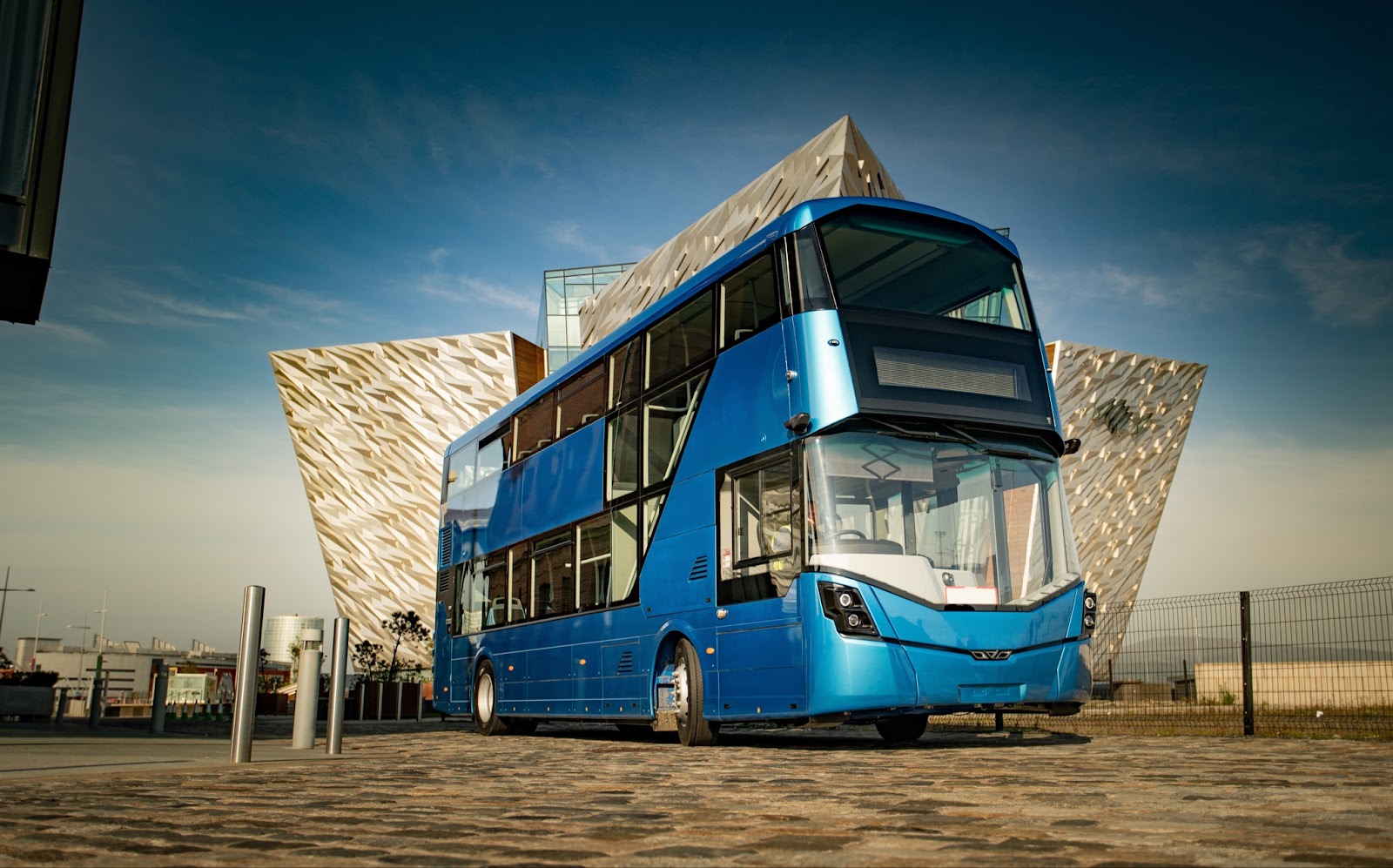World’s most efficient double deck electric battery bus visiting Midlands as cities eye zero emission transport

The world’s most efficient double deck battery-electric bus is visiting the Midlands as part of a UK-wide tour to demonstrate its zero-emission capabilities.
The rapid-charge StreetDeck Electroliner – the first ever EV from pioneering bus builder Wrightbus – was launched by the firm in 2021. Official tests have revealed the bus to be the most energy-efficient of its kind on the market.
National Express West Midlands will be trialling the bus from this week in Birmingham.
The Wrightbus StreetDeck Electroliner is the perfect combination of range and efficiency, maximising power and offering class-leading recharge times.
Official assessments undertaken at UTAC using the ZEMO-accredited Ultra Low Emission Bus (ULEB) test showed that the StreetDeck Electroliner achieved a result of 0.69 kWh/km – around half the energy consumed by its closest BEV double deck UK rival and significantly better than all other BEV single deck bus results published on the ZEMO website.
Not only is it more energy-efficient, but according to ULEB calculations, the StreetDeck Electroliner also produces an impressive 86 per cent less CO2 per km than the ZEMO Euro6 Diesel baseline.
Ben Werth, Chief Commercial Officer at Wrightbus, said: “We’re looking forward to bringing the world’s most efficient double deck EV bus to Birmingham to show everyone what it is capable of.
“We’ve created the most efficient vehicle by combining optimum power with a class-leading rapid charge, meaning our electric bus spends more time on the road than any other. We’re confident our customers will enjoy the experience.
“Since the bus was launched, we’ve had significant interest from across the UK and beyond.
“We’re immensely proud of the reputation we have forged in the zero-emission transport sector and the important role we are playing in the UK’s ambitions for decarbonisation.”
David Bradford, managing director of National Express West Midlands, said: “National Express West Midlands plays a critical role in keeping people and communities connected, and we’re proud to be providing greener, cleaner transport choices.
“Back in 2019 we announced our ambition to have a fully zero-emission bus fleet by 2030 and by working in partnership with local authorities and manufacturers, we’ve already taken huge steps towards that goal.
“As we continue our journey, we are delighted to trial the Electroliner during its tour of the UK. We look forward to testing the bus on routes across Birmingham in order to better understand capabilities and efficiencies under our usual operating conditions.”
Utilising a French battery pack which delivers 454kw and a 200-mile range, the Electroliner can recharge in two hours 45 minutes and copes with all routes, whether urban or rural.
Nor has the bus compromised on layout or capacity, with batteries efficiently stored around the bus to ensure passenger capacity and comfort is maximised.
Founded in 1946, Wrightbus has been at the forefront of public transport for more than 75 years and is still based in the heart of Ballymena, Northern Ireland.
It has been at the forefront of the movement to decarbonise public transport across the UK and Ireland with its world-first hydrogen double decker, the StreetDeck Hydroliner, alongside the Electroliner.






